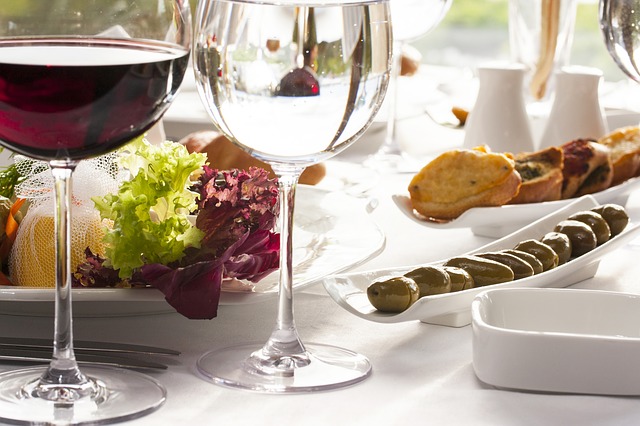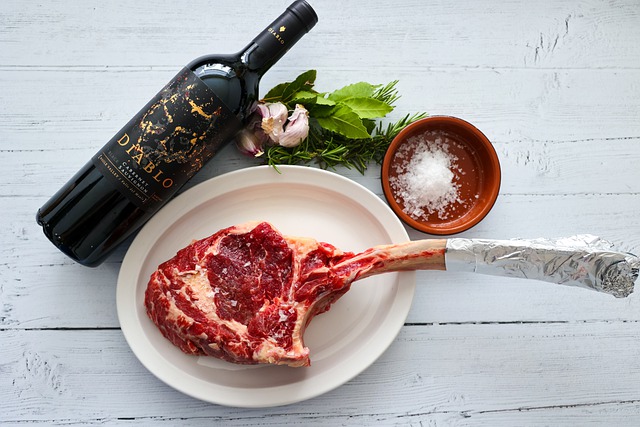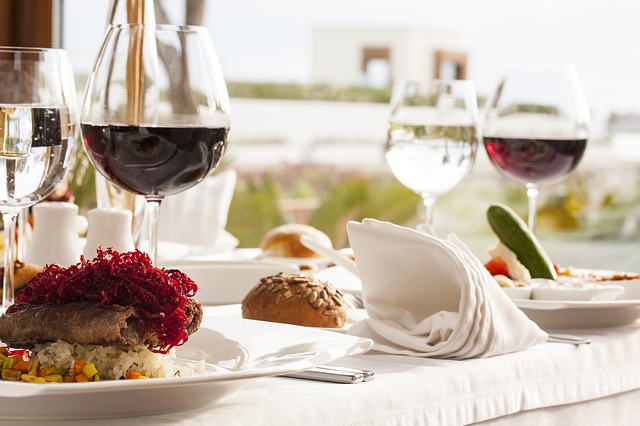Everyone enjoys a double act, whether it’s for a comedy performance or a couple of dishes from your favorite cuisine. When it comes to pairing food and wine, this is an act you won’t want to miss. But how can you make a delectable twosome for yourself and your special someone if you don’t know what wine pairs with their favourite meal?
You don’t need to master sophisticated methods for picking the perfect bottle to complement your food for food and wine pairings. This isn’t a difficult task. You can make excellent food and wine pairings by following a few basic rules.
It’s easy to be intimidated by the world of wine. From crisp, dry whites to full-bodied red wines, there’s something for everyone. If you are a wine lover, you must check Wine history. The options are limitless! When pairing wine with food, though, there are several pointers to keep in mind. By the time you finish reading the post, you will surely master the art of pairing them right.
Look for Balance
Are you wondering what weight has got to do in pairing your food and wine? Well, weight classes mainly exist in the world of combat sports. But this is one of the basic rules you should follow when pairing food and the right wine. Do you remember the age old rule that white wine goes with fish while red wine with meat? Although this rule had some historical wisdom, there are more options to choose from now. Make sure to check out and try Mclaren Vale wineries for lunch.
There is an increasing number of tasty and sustainable options to suit a wide range of tastes and appetites for vegan cuisine. Fortunately, there is an extensive list of vegan wine to enrich your favorite foods, allowing you to prepare the well-balanced vegan dinners of your dreams.
One primary consideration should be the richness of both the wine and the food. Both the wine and the meal should complement each other, with none overpowering or competing with the other. By balancing the two, you substantially increase the chances of the pairing succeeding. Many traditional wine-and-food pairings use this rule as the basis for their recommendations. An example of this would be pairing a Pinot Noir with Beef Bourguignon. The Beef Bourguignon is a rich dish which is typically slow cooked or simmered over a long period of time. This pairs really well with the lighter style red wine, Pinot Noir. The freshness of the red fruit flavors and tertiary aromas are a match made in heaven for the Beef Bourguignon.

Red Wines and Red Meat
This is the basic rule and also easy to remember.. Red wines like Malbec and Merlot pair well with red meats like scotch fillet or sirloin steaks. Lamb pairs well with Rioja red wines from the north of Spain. It is because red wine softens the proteins in the meat and tannins can help cut through the fat.
White Wine and Light Meat
White wines go well with fish and white meat like chicken or pork. The acidity and citrus and tropical fruit aromas brings out the flavor of the fish and make it taste fresh. Because of its acidity, white wine can have a similar effect to how lemon is squeezed over fish to improve your experience.
Acidity in Food and Wine Pairings
A wines acidity is the backbone of food and wine pairing. It is essential to select a wine with a higher acidity levels than the food. Otherwise, the wine will taste flat, as your food will mask a lot of the wines natural flair.
Usually, this is not a problem because most of the wine has a higher level of acidity than any food. However, if you eat something cooked with citrus fruits or tangy flavored sauce, you would want to double-check that.

Spicy Food and Wine Pairings
Spicy foods could be a problem when pairing with wine. High levels of alcohol in wine, like Spanish or Australian red wines, usually aggravates or increases the heat from exotic spices and chili. Even beer is also not a great pairing with spicy foods. A light white or somewhat sweet wine, particularly the latter, is ideal. A slightly sweet wine’s moderate sugar level will generally help temper the heat, keeping the wine’s clean, fruity flavors while giving a refreshing freshness to your eating experience. Examples of wines with this profile are Pinot Gris, Riesling or Gewürztraminer.
When you eat spicy food, it is always better to go with wine with lower alcohol content. White wine is preferential over red wine.
Sweet Food and Wine Pairings
Nothing else could be delicious than a glass of wine paired with a dessert or pairing lobsters and wine. Combining sweet flavors, rich textures, and acidity could be the perfect end to a delightful meal. As a basic rule, you should choose a somewhat sweeter wine than the dessert you’re eating. Your wine will taste flat, bitter, and unpleasant if your dessert is significantly lighter or drier than your dessert.
If your dessert wine is extremely sweet, but your dessert isn’t, the pairing will still be incomplete, with the wine likely providing the majority of the flavor rather than the dessert. It’s crucial to match sweetness levels in this case.

Tannins Can Make the Meat Tastier
Tannins in red wine can influence the texture of the wine in your mouth. We generally experience it as a drying sensation in the mouth rather than a distinct flavor. Tannins are found in the seeds, stems, and skin of grapes. Because the tannins in the wine bind to the proteins in the meat instead of the proteins in your saliva, red wine seems to be softer in the mouth.
At the End
White wine, sparkling wine, and red wine all have complex and diverse flavor profiles. It means that if not thousands, there are at least hundreds of different ways to pair your food and wine. But the above mentioned tips are some basic rules to have the perfect combination and make your dining experience more pleasant. Follow them and you are on your way to enjoying both your wine and food like never before!


































